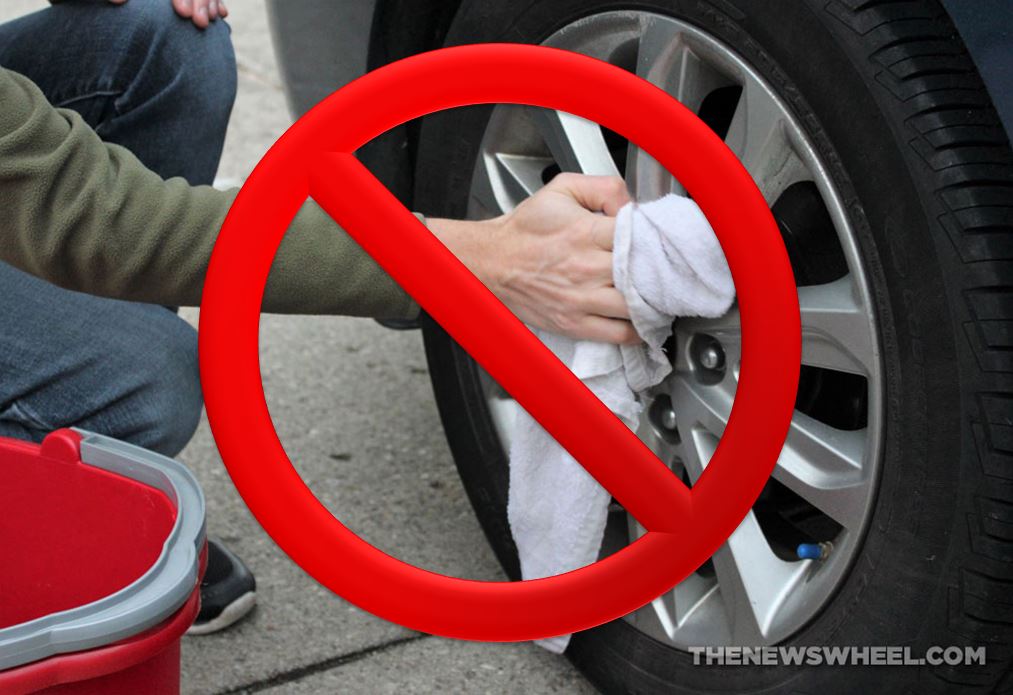Tire changing machines for motorcycles and cars are an indispensable device in today's auto-motorcycle repair shops. However, to buy products of excellent quality and with competitive prices, customers need to find reputable addresses and are trusted by many craft workers.
In companies or reputable workshops, there will be professional technical teams that guide the installation and use of tire removal machines according to the manufacturer's procedures. The following article will guide you on how to remove tire from rim with a car tire changing machine and by hand.
In the car there is always a place to store the above items, always have these tools ready in the car before going anywhere, because trouble can happen at any time. You should be proactive in every possible situation.
Removing tires is a matter for the professional. Because if you do not do it right, you can seriously damage tires and rims and endanger your safety. If you have a lot of manual skills and are an accomplished screwdriver, you can lift the tire from the rim by hand with an assembly iron (better with two).
Removing a tire can be annoying. So, it is dangerous to do it in the middle of the road. It is because you may get stuck in the middle of the road while riding. Hence, please move to a spacious position to remove the tires.
On the tire, there will be a piece of rubber that is the air valve. In this step, screw the valve cap in the counterclockwise direction. Using the valve remove tool will deflate the tire. After performing the above operations, place the tire on the ground to remove the tire.
Tires and rims are always fastened together with special glue. Use strong glue and seal so that they do not fall off. When you want to remove a tire, break the glue and stick the tire to the rim firmly. To break the grain of the wheel, you have two ways: manual tools as use a large flat-tip screwdriver or use your strength.
When making the removal of tires that are prone to slippage, place a mat under the tire. Use foot force on both sides of the tire to reduce the chance of scratches and increase leverage. While removing the tire from the place, you may need to apply some hard grease to the surface.
After removing the tire from the rim, you will install a new tire. So you need to use oil to apply the inside of the tire to avoid scratching the rims. If there is no oil, you can replace it with another liquid such as soap.
You may now want to put new tires on the rims so you can continue to use them. You can use specialized tools if you do not have time. Inflate your tires and use them right away.
You can use specialized tools if you do not have time. Inflate your tires and use them right away.
If you want to reuse the tire, we should place a pressure piece with rounded corners between the other vice jaw and the tire rubber. Otherwise, the sharp edges will damage the flanks. The pressure point of the vice should be very close to the rim shoulder.
It requires the mentioned mounting iron to pull it off. First, you press the tire on one side with both hands firmly into the low bed and then push it to the opposite side. There you put the tire iron on and lever the rubber over the rim flange with little effort.
Car tires fit so tightly to the wheel that the human force can not remove them. Especially for large trucks, it becomes even more difficult. It is the reason people need specialized tire entry and exit devices called tire entry machines. Here are the reasons to use this device.
Here are the reasons to use this device.
Use the tire changing machine in the following sequence to achieve the best effect but no less quickly. Before getting into work:
 Clockwise is increasing pressure, counterclockwise is decreasing pressure.
Clockwise is increasing pressure, counterclockwise is decreasing pressure.Step by step guide:
First, you need to use a tire jack to lift the wheel that you need to change the tire on. Then use a wrench to unscrew all the bolts. Next, deflate the tire that needs to be replaced.
Tires and rims are bonded together with glue so that the tire does not come apart when moving. So, to remove the tire from the rim, you need to remove this glue. To separate the tire and rim, you need to use a tire bead breaker.
Place the tire between the presser surface and the rubber pad, paying attention to the pressure plate with the wheel wall in balance.
Once you have removed the seal between the tire and the rim, for easy separation of the tire, you need to apply lubricant to the gaps between the tire and the rim and use a tire iron to create a gap between the rim and the tire.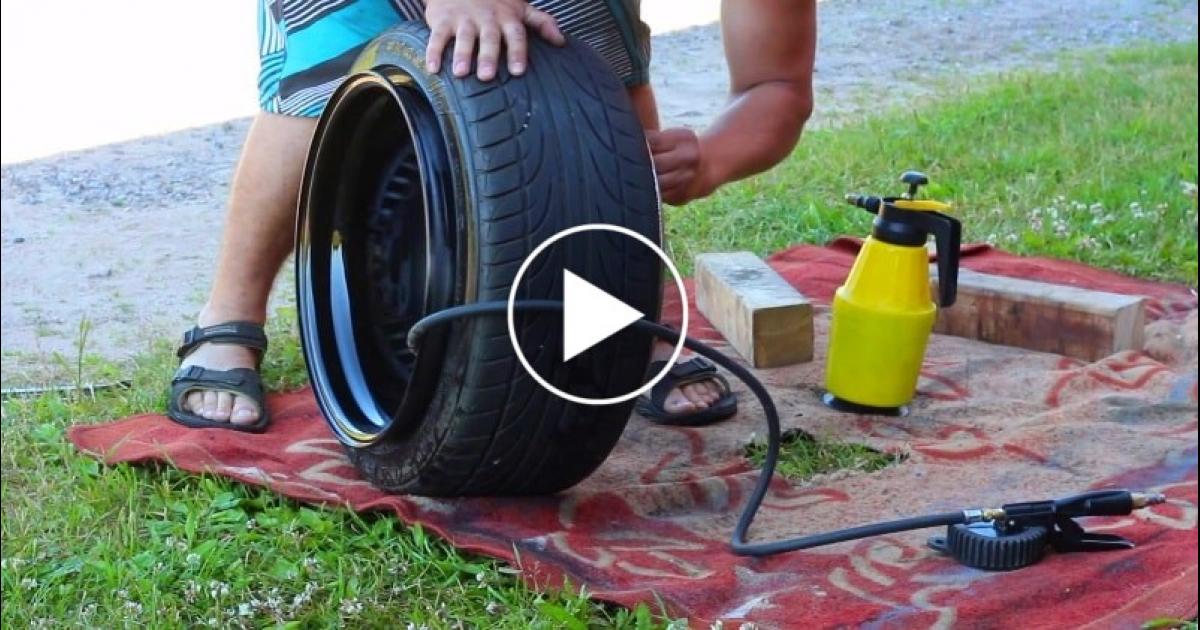 The use of lubricants both helps to prevent the rims from being scratched and the tires to easily separate from the rims.
The use of lubricants both helps to prevent the rims from being scratched and the tires to easily separate from the rims.
After one side of the tire has been separated from the rim, simply repeat the above steps with the other side of the tire, the process of removing the tire from the rim will be complete.
In the maintenance of cars and heavy-duty vehicles, people need to use specialized tire entry and exit equipment. It is a tire machine. It makes the tire removal process quick and convenient. The above is a manual on how to remove tire from rim and how to use the tire machine. We hope you can remove tires from the rim effectively.
Tires are just as crucial as the engine when it comes to maintaining your car’s safety and performance. At some point, however, tires wear out and this compromises the car’s efficiency, especially in traction and braking ability which can potentially lead to fatal road accidents.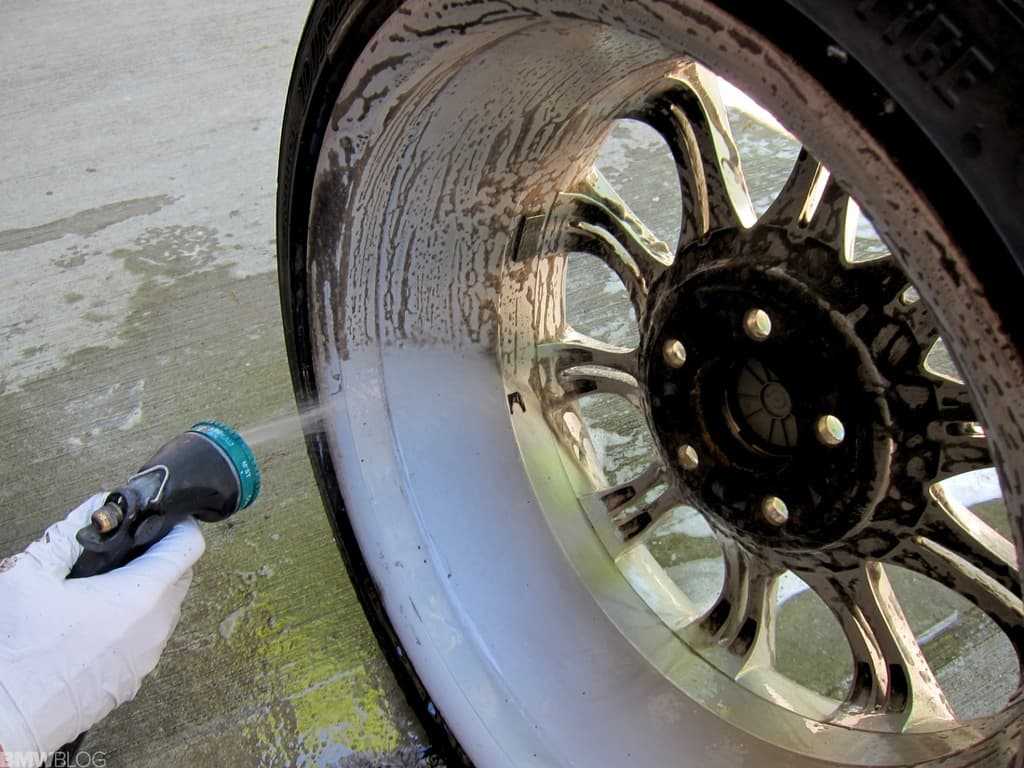
If any of your tires exhibit a pattern of excessive wear, it’s about time you change them. Changing tires involves taking off the rubber tread that is tucked inside the wheel’s rim, a grunt work that many would rather pass and hand to a mechanic.
But what if we tell you, popping the bead out of the rim is not too much of a mundane job if you are armed with the in-depth information on how to do so. Doing your own tires will save you a lot of money from costly repairs that should be otherwise spent wisely spent on other car-related maintenance.
With few hand tools and tricks, you can remove the bead off the rim yourself. But the easiest and quickest way to do it is by using a tire-changing machine. This article will cover both of these methods.
Prying the tire loose from the rim might sound intimidating especially if you are a novice or new to tire maintenance. But you don’t really have to be an auto mechanic or expert to do the task. All you need is the right tools, basic mechanic skills, and know-how. The following is an easy guide to carry out the goal.
All you need is the right tools, basic mechanic skills, and know-how. The following is an easy guide to carry out the goal.
What you will need:
● Lubricant (Alternative: liquid dish soap or oil)
● Crowbar, Prybar, Tire Levers, Tire iron (any of these)
● Presta or Schnader or any Valve Core Removal Tool (Alternative: Pliers)
● Screwdriver
● To break the bead manually, you need either one of these things: a Jack, a Knife or any other sharp cutting tool, a vehicle
● Optional: Tire Bead Breaker, Tape
The Procedure:

Thread the tool inside the valve stem and twist it in a counterclockwise direction. This should loosen and remove the cap off the tire. Then release and allow the air to exhaust.
A valve core removal tool is a small metal that resembles a small screwdriver. It is a handy tool that is relatively inexpensive and often available in a set for different valve sizes like that of the Awpeye 4 Pack Valve Core Remover Tool.
● Drive and run over the tire you are working on. The aim is to force the rubber down so its easier for the bead to pop out. Hence when driving your vehicle over the tire, make sure that it is the rubber part you are driving onto and not the metal rim. You may need to run the car over it a few times to break the rubber part.
Hence when driving your vehicle over the tire, make sure that it is the rubber part you are driving onto and not the metal rim. You may need to run the car over it a few times to break the rubber part.
● Put the whole weight of the vehicle on the tire via suspension. The method involves raising the vehicle using a jack and partially lowering it. Once the vehicle is lifted, place the tire underneath the jack. Adjust the jack and lower the vehicle onto the bead part of the tire. Warning: Do not attempt this method if you are new to the process of car suspension unless there is an expert or professional supervision. The procedure requires lifting a car and working underneath it which is can be really dangerous to you and to your vehicle especially if you don’t know what you are doing.
● Cut the bead off the rim. You can cut through with it using a saw blade or a drywall knife. To cut it, follow the seam running alongside the bead, carefully not touching the metal rim.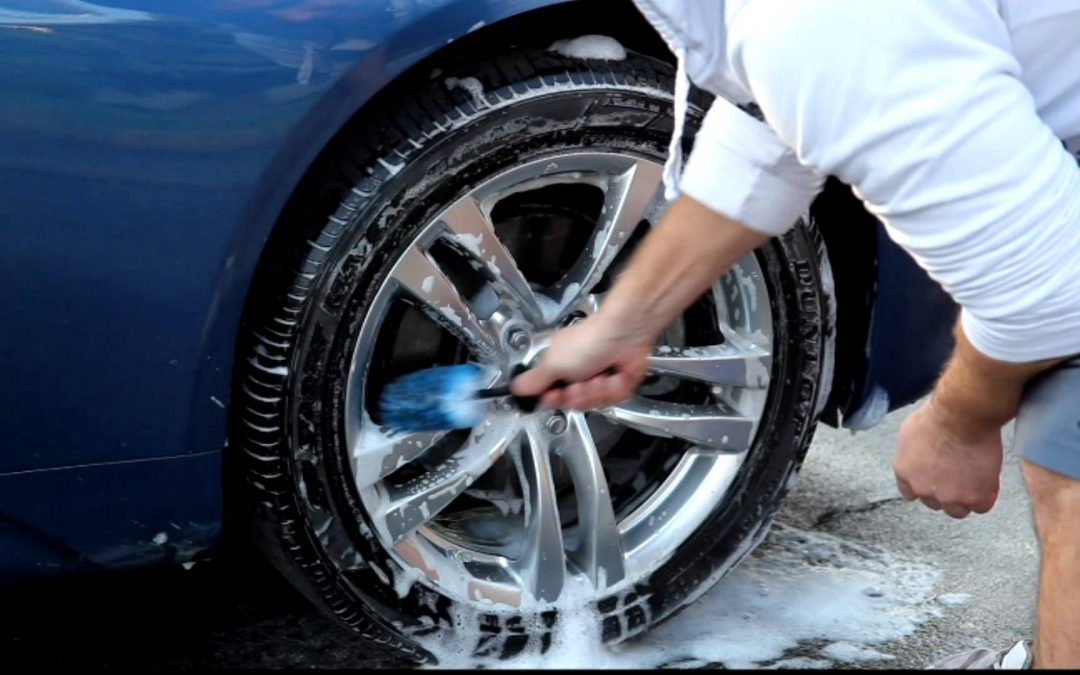 Be cautious as you cut because you don’t want to damage the metal rim To avoid the blade veering towards the tread, insert a wooden towel in the sections that are already cut.
Be cautious as you cut because you don’t want to damage the metal rim To avoid the blade veering towards the tread, insert a wooden towel in the sections that are already cut.
If you are really having a hard time with the bead, you can easily get away with a bead breaker tool. A tire bead breaker is a handy tool designed to dismount the innermost diameter of the tire interfacing the wheel. The operation is so fast and easy it’s basically like opening a canned good! It’s also the safest way to de-bead without damaging the rim. To make the most of your purchase, invest in a well-designed bead breaker like that of BeadBuster XB-450. To date, this is the most affordable and efficient bead breaker.
 Use as much as a lubricant as necessary. To avoid accidentally scratching the metal easily while prying, you can also tape the edge of the rim prior to lubrication.
Use as much as a lubricant as necessary. To avoid accidentally scratching the metal easily while prying, you can also tape the edge of the rim prior to lubrication. 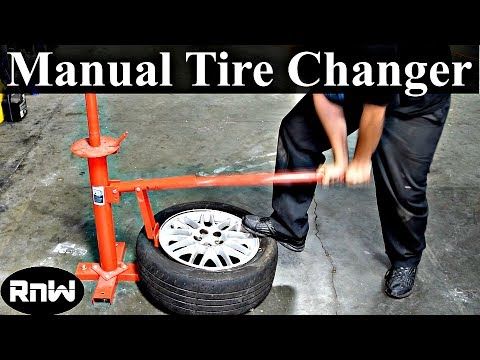
If you find taking a tire off a rim by hands too much of a task, time to pull out the big weapon. A tire changing machine skips most of the lengthy process of manually separating the tire from the rim.
Note that the tire changing machine we are referring to differs from that of the actual heavy-duty tire changing equipment technicians used in the shop. The manual tire changing machine is a rather portable and handy tool that requires no power hookups to operate. While the machine will mostly do the job, you will still need the help of a few hand tools.
What you will need:
● Plywood Board (Alternative: any strong wood surface that is at least ¾ inches thick)
● Manual Tire Changing Machine
● Tire Changing Rod (Alternative: any metal rod or tube with a pointed tip)
● Screwdriver
● Bolts (preferably 5 inches long and ½ inch wide)
● Presta or Schnader or any Valve Core Removal Tool (Alternative: Pliers)
● Marker or Pencil
● Lubricant (Alternative: liquid dish soap or oil)
● Optional: rug or paper
The Procedure:
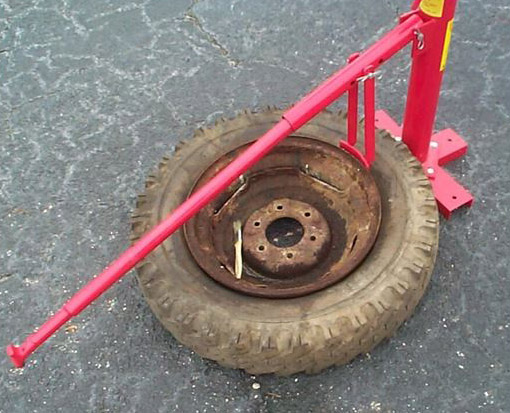 The goal is to create a platform strong enough for the machine to stand on. First, you need to place the machine on top of the plywood. Using a marker, trace the machine’s base on the platform. Do put a mark on the holes or the location of the bolt as well.
The goal is to create a platform strong enough for the machine to stand on. First, you need to place the machine on top of the plywood. Using a marker, trace the machine’s base on the platform. Do put a mark on the holes or the location of the bolt as well.Some prefer a block of concrete as a base because they are sturdier and stable. Others drill the machine directly on the floor. But note that you will need a mason drill to engage the bolts into hard cement. Nonetheless, the bolting process is the same as with the wood material.
 Apply a decent force as you turn the screwdriver clockwise. Twist it until the bolts are tightened fully and bite into the wood.
Apply a decent force as you turn the screwdriver clockwise. Twist it until the bolts are tightened fully and bite into the wood.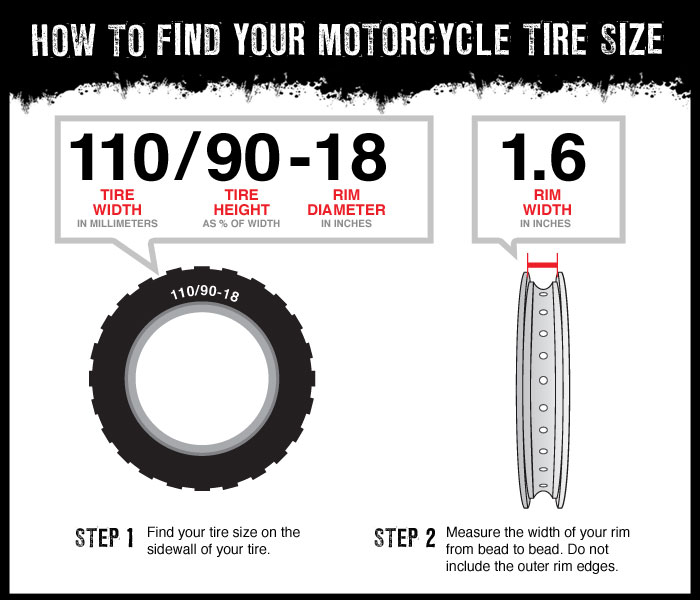 There should be a changing rod that comes with your tire changing machine but any regular metal tube with a pointed end will do. You will use it to expose the rim of the tire. Start the process by sticking the rod’s pointed end into the rim-tire joint. Using your hand or your foot, apply pressure on the wedge by pushing it down. This will gradually exposed the rim.
There should be a changing rod that comes with your tire changing machine but any regular metal tube with a pointed end will do. You will use it to expose the rim of the tire. Start the process by sticking the rod’s pointed end into the rim-tire joint. Using your hand or your foot, apply pressure on the wedge by pushing it down. This will gradually exposed the rim.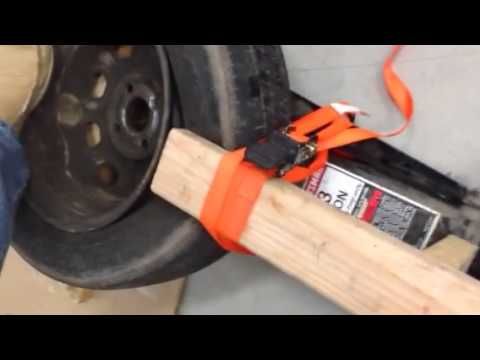 There should be smaller stick-like spoke beside the central spoke so make sure that as you slide the metal rim, the tire passes through the smaller spoke by aligning it into the lug nut. To avoid scratches on the rim while inserting the rim, you can wrap a rug or any cloth (a paper may do) around the spoke.
There should be smaller stick-like spoke beside the central spoke so make sure that as you slide the metal rim, the tire passes through the smaller spoke by aligning it into the lug nut. To avoid scratches on the rim while inserting the rim, you can wrap a rug or any cloth (a paper may do) around the spoke.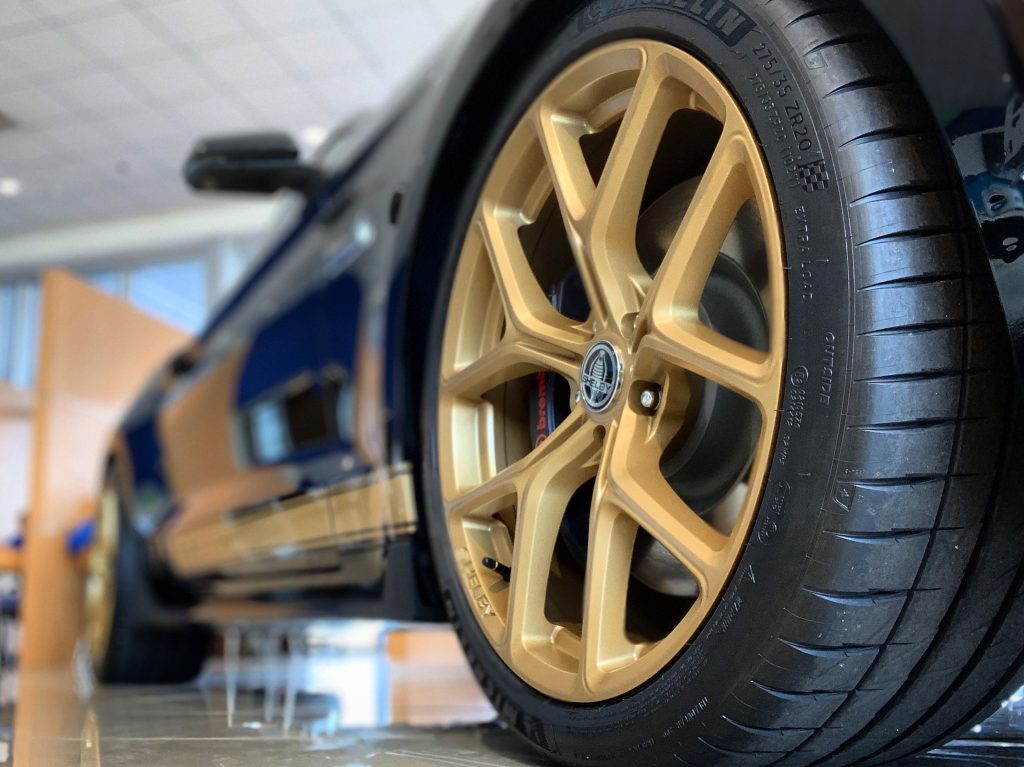 This will make it easier for you to pry the rim of the bead later on. Make sure the area underneath the rim are also lubricated so partially lift the rim up to reach under it. Apply generous amount lubrication as necessary.
This will make it easier for you to pry the rim of the bead later on. Make sure the area underneath the rim are also lubricated so partially lift the rim up to reach under it. Apply generous amount lubrication as necessary.You may not be able to pry a certain section in one shot and that is fine. If this happens, simply go back by lifting the foot pedal using your foot to turn the rod counterclockwise.
 Then pry the bottom side until you can fully lift the tire out of the rim.
Then pry the bottom side until you can fully lift the tire out of the rim.Related video:
This article has thoroughly discussed the process of disengaging the tire from the rim and now it’s your turn to take the wheel. Sure, the entire process of changing your own tire– from removing the wheel of the vehicle to fitting new tires might seem lengthy and complicated but hey at least we have taken down one of its processes, namely removing the tire off the wheel. Doing your own tires will save you money and soon enough, you will be reaping the satisfying feeling of your hard work.
A punctured or broken tire, as well as other defects, may lead to the need to take apart a wheel on the road. Also, disassembly is required if do-it-yourself tire fitting is performed, tires are repaired and / or replaced in a conventional garage, etc.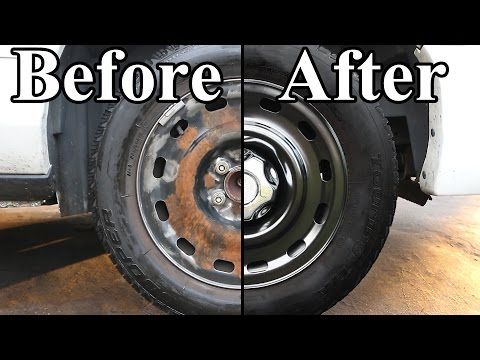
At the same time, not every car owner knows how to disassemble the wheel on their own without a special machine or tool. In general, wheel beading involves working with two types of tires:
The first type is much less common today, but can also be found on some vehicles. In any case, it is necessary to take into account individual subtleties and nuances, as well as to have a minimum set of tools. Read more in our article.
Contents of the article
It is a mistake to believe that you can limit yourself to only a hammer and pry bar when removing a tire. Such a minimum set can only lead to hidden or obvious damage to the rubber, and the nuances will appear later (after installing the previously removed tire on the rim).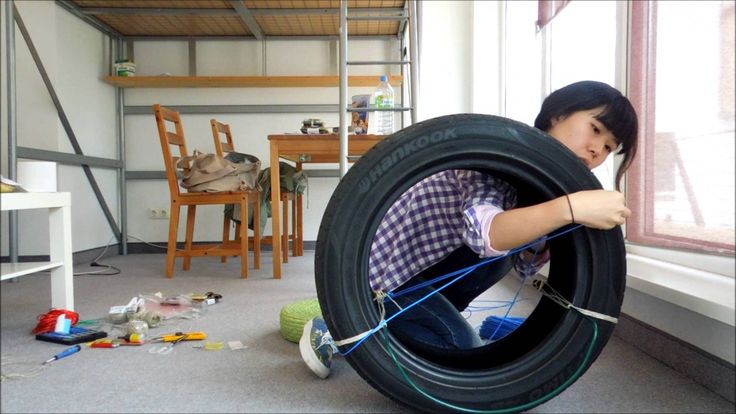
Let's start with wheels that have a tire and a tube.
A tubeless tyre, unlike tires with a tube, does not have a separation into a tube and a tire. This means that the inner cavity of the wheel is filled with air. To maintain tightness, the tire fits tightly on the disc. At the same time, this design assumes that there are additionally special convex areas along the edges (hampas).
When the wheel is inflated with air, the tire joint seals as the pressure increases. Taking into account such features, disassembly of tubeless tires is more labor-intensive.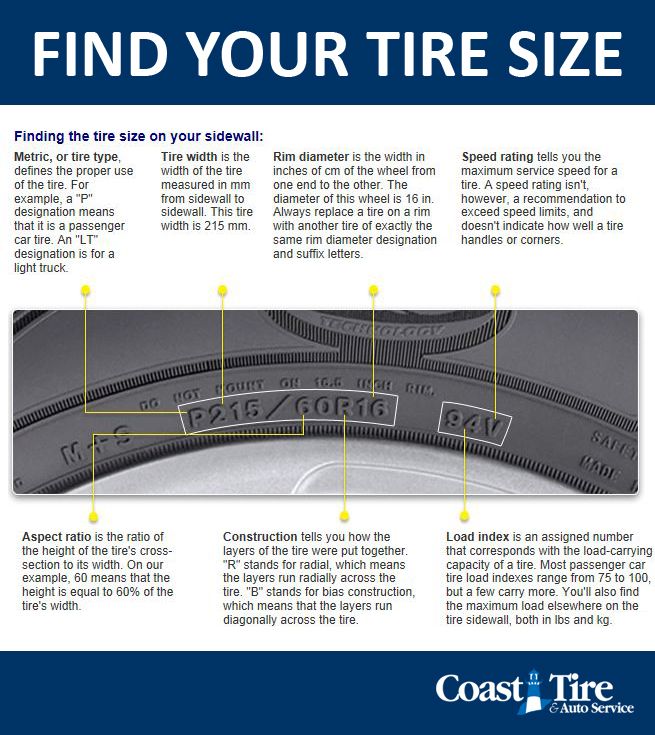 To disassemble a tubeless wheel, you need to literally tear the tire off the seat.
To disassemble a tubeless wheel, you need to literally tear the tire off the seat.
Please note, if this type of tire punctured on the road, it is better to use a tubeless tire repair kit or try to insert a tube inside and get to the tire shop on your own.
It is also important to consider that even if the tubeless tire can be removed, the air must be supplied quickly and at high pressure during subsequent inflation. This is necessary in order for the board to be able to jump over the hump. In artisanal conditions without a powerful compressor (compact automobiles will not work), this is almost impossible.
The only way out is to put the tire on the rim with a small explosion (popularly, this method is called pumping the wheels with gasoline). To solve the problem, you need to take about 20 grams of gasoline or ether.
We also recommend reading the article about which tires are better, studded or non-studded. In this article, you will learn about the advantages and disadvantages of different types of winter tires for a car, as well as what you need to consider before buying.
Proceed as follows:
In fact, this is the only way to board a "tubeless" in artisanal conditions without a powerful compressor. It is quite obvious that wheel beading in this way is associated with certain risks and cannot be recommended, especially for novice drivers.
When replacing one tire, it is necessary to install exactly the same tire as on the other wheels (summer or winter tires with the same pattern from one set). If a different tire is installed, be aware that driving and braking stability, as well as vehicle handling, will change.
 It is also important that dirt does not get inside the tire.
It is also important that dirt does not get inside the tire. We also recommend reading an article on how to choose wheels for a car. In this article, you will learn how to choose the right rims for your car, as well as what features you need to pay attention to when choosing rims.
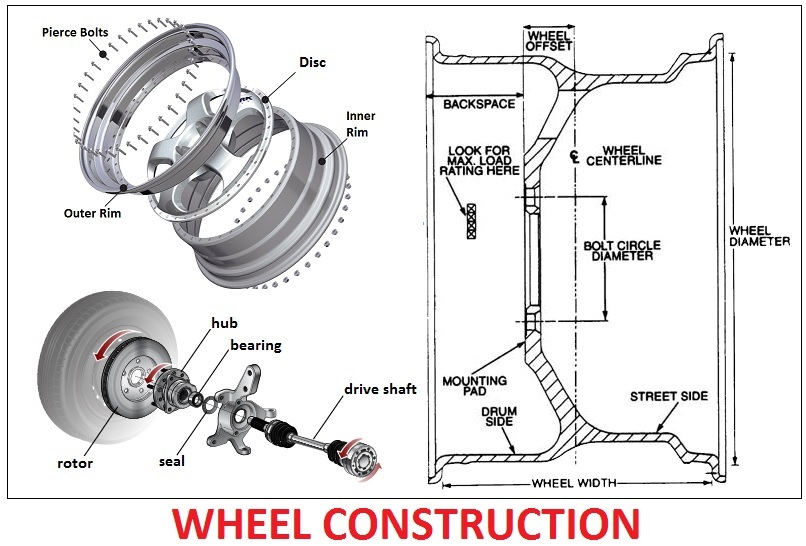 As a rule, even if you manage to remove the tire, you can seriously damage it during removal.
As a rule, even if you manage to remove the tire, you can seriously damage it during removal. More experienced motorists who are accustomed to driving long distances usually have both a full-size spare tire and a compact stowaway in the car.
The situation when you have to disassemble a tire is familiar to every car owner. Seasonal change of tires, or a “caught” nail on the road. The driver does not always have the desire (or the opportunity) to go to the nearest tire shop, where the masters will do everything for you for quite a bit of money. How to disassemble a car wheel using improvised tools at home?
Seasonal change of tires, or a “caught” nail on the road. The driver does not always have the desire (or the opportunity) to go to the nearest tire shop, where the masters will do everything for you for quite a bit of money. How to disassemble a car wheel using improvised tools at home?
Many drivers dismantle the wheel only on their own, not trusting anyone and all because there is a situation when the tire is “welded” and a hasty master (or simply inept) can simply completely ruin your rubber. Therefore, it is best to learn how to disassemble the wheel with your own hands - then you will be 100% sure that the disassembly is accurate.
A few "improvised tools" and a great desire, plus a little more effort. You have probably seen more than once how unfortunate drivers try to remove the “welded” rubber from the wheel rim with hammer blows on the mount, please don’t do this. Even if at first there will be no noticeable damage to the rubber, over time they will appear and “shoot” you at a completely inopportune time.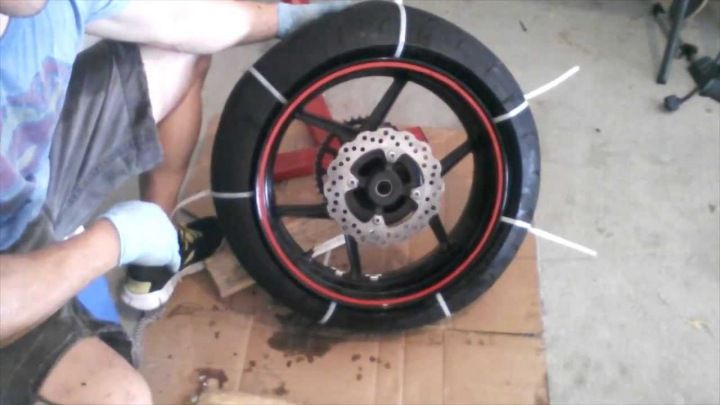
Buy thinner or turpentine from any hardware store, alcohol will also work. Pour it over the tire in the place of "welding", wait a couple of minutes, and calmly remove the tire from the rim. Then just do not forget to wipe the whole place dry!
Wheel breaking tools:
In order to properly disassemble the wheel, you need to remove it from the car. Then, using a steel corner, remove the tire from the rim, for this we drive this corner between the rim and the tire and apply force. Disassembly of the wheel must be started from the side opposite to the spool.
The wheel chamber must be lowered. It is advisable to round the end of the corner so that it is more convenient to work and not damage the tire. Trying not to touch the camera, you must very carefully remove the tire from the rim, pressing it down a little. When the entire side of the tire is outside the rim, you can carefully pull out the inner tube. That's all, your disassembly of the wheel is finished. Everything is assembled in reverse order.
That's all, your disassembly of the wheel is finished. Everything is assembled in reverse order.
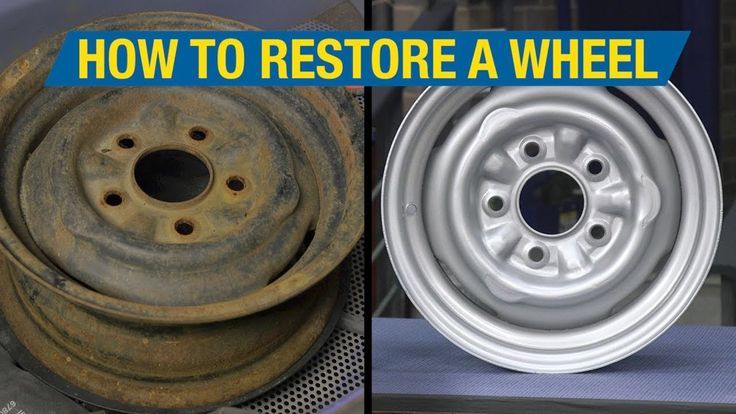
If you "caught" a nail on the road and the tire started to deflate a little, do not make a common beginner's mistake, do not immediately pull out this unfortunate nail. It will briefly allow you to keep the remaining air in the chamber, and this will allow you to get to the garage or tire shop, where you can safely disassemble.
There is one more rule that you must always follow when disassembling yourself. We disassemble FROM the chamber nipple, but we board TO it. After you have started the beading, it is necessary to sharply inject air into the chamber without a spool. This will allow it to straighten and put in place in the tire. When the chamber has become even in the tire, you can slowly inflate the tire to the prescribed volume.
Now you know how to properly disassemble the wheel of your car yourself.